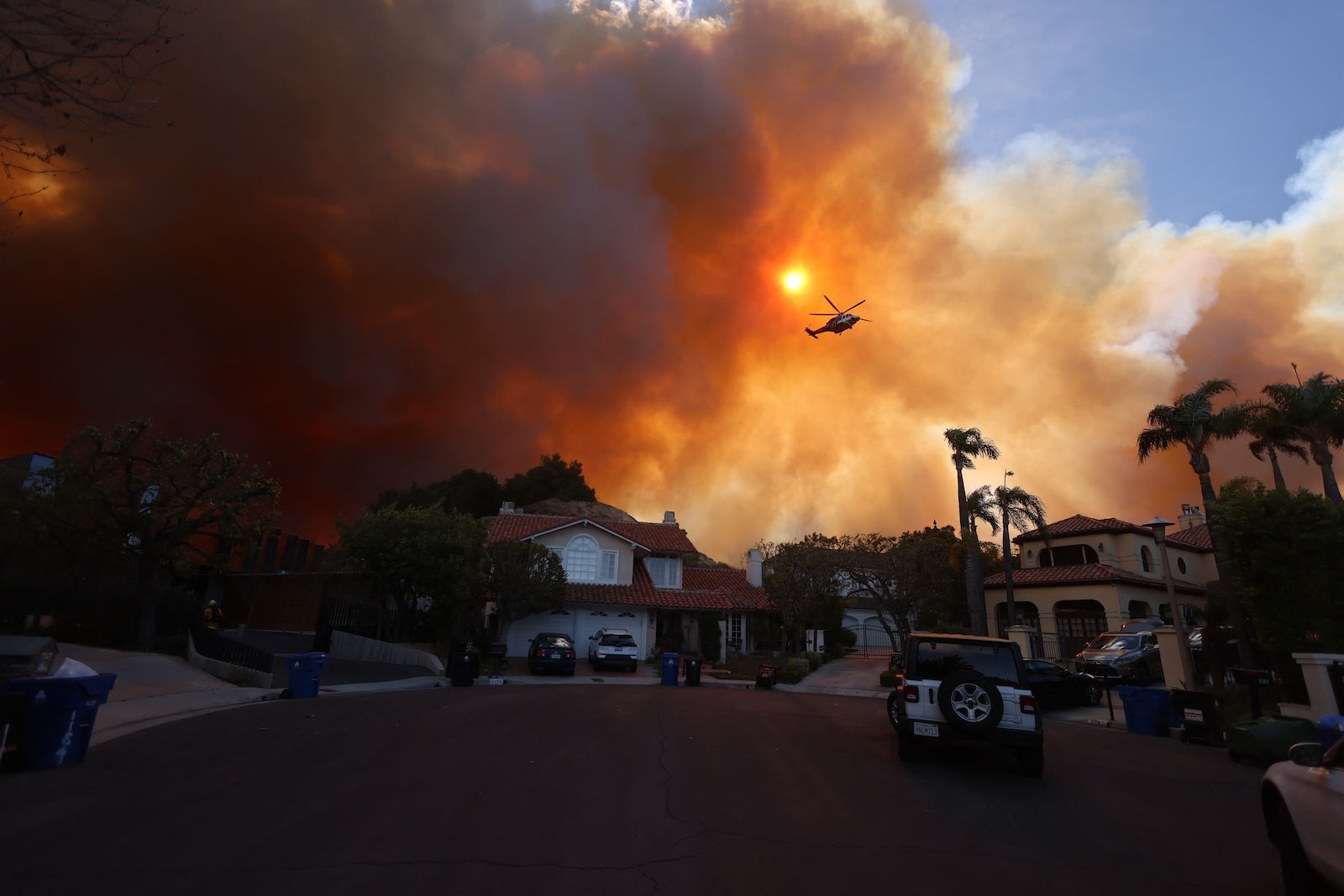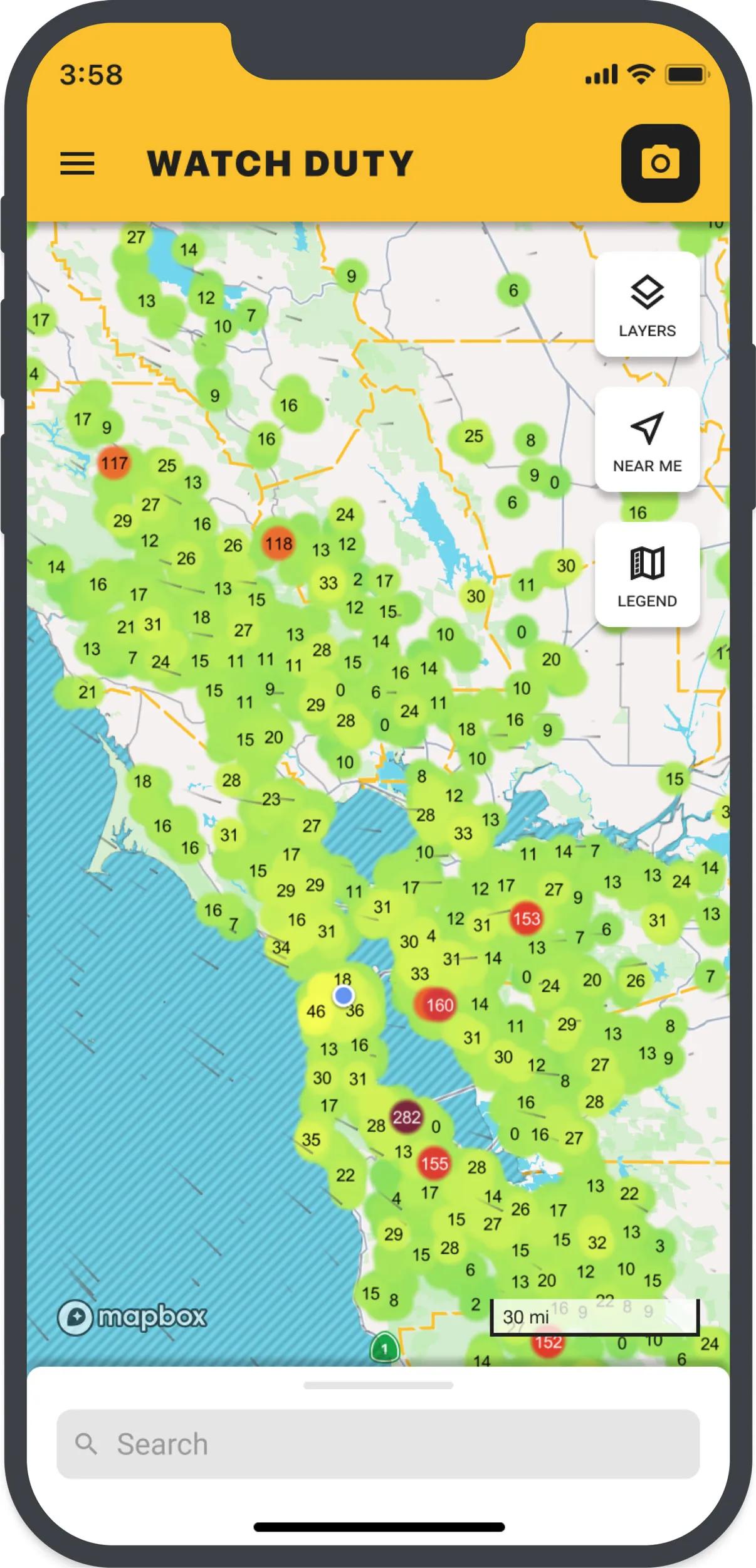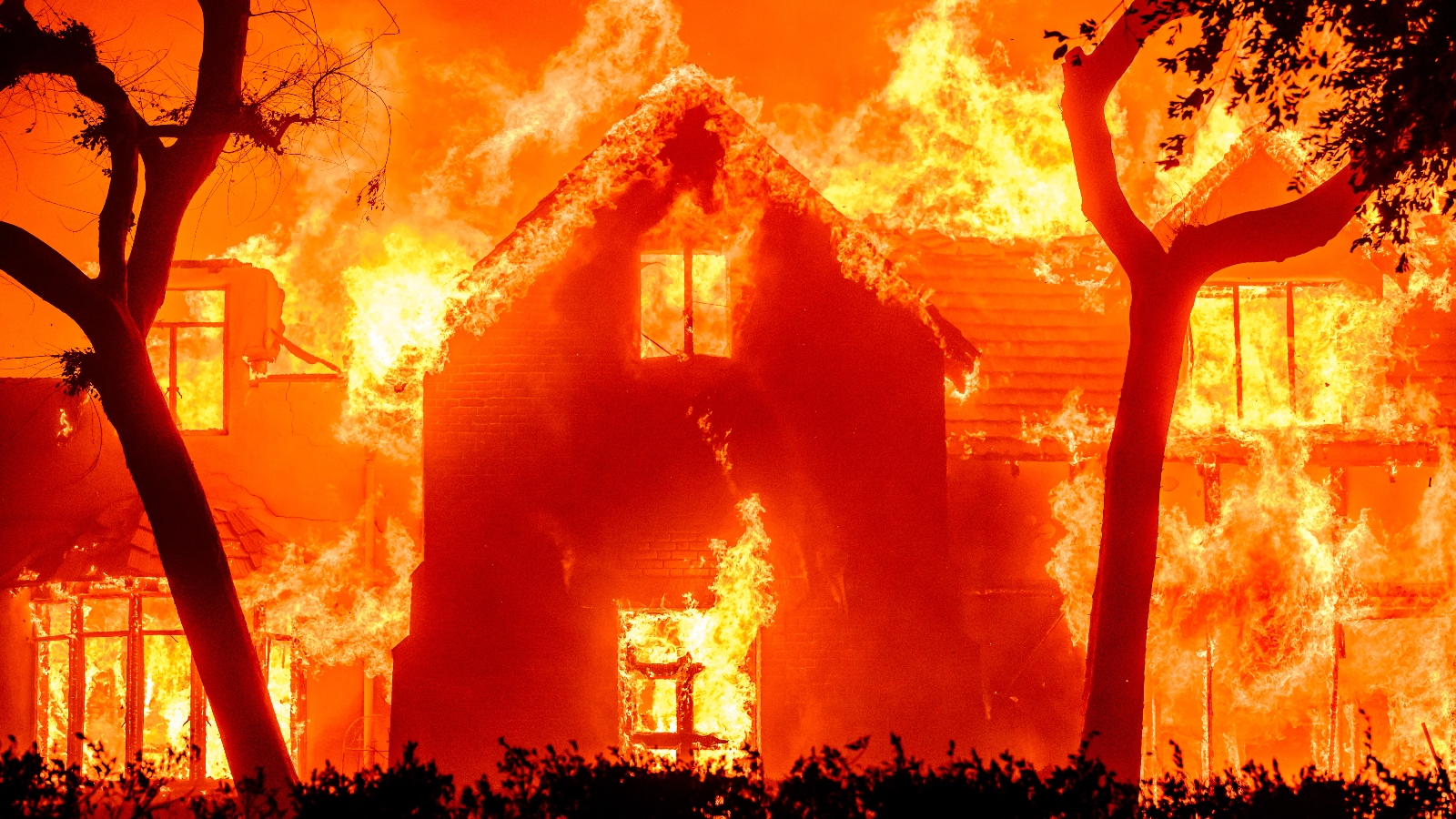
For days, horrific wildfires have torn through Los Angeles, and they are still raging. The Palisades and Eaton fires in Los Angeles have moved so fast that people have been stuck in their homes or had to abandon cars and wheelchairs on the side of the road to escape the flames. Those waiting to hear whether their houses have burned are living in agonized dread. Many of them have turned to Watch Duty, a fire-tracking app that has become an indispensable source of information in an uncertain time.
Watch Duty is an app that tracks wildfires and disaster information and presents it to users in as close to real time as possible in the form of maps and notifications about fire perimeters, evacuation zones, and air quality. Its CEO and founding father is John Clarke Mills, a Northern California resident who was inspired to create the app after a wildfire in 2021 threatened his home. Frustrated by a lack of timely information about the whereabouts of the fire and unsure whether he should evacuate, Mills funneled that anger and anxiety into a platform that aims to help people track fire movements near them. The app has slowly grown into a critical resource for people in fire-prone areas, and now covers 22 states across the western and central US.
The sheer scale of the Los Angeles fires and the prominence of the location have delivered an unprecedented amount of eyeballs to the young platform. The service gained 600,000 users overnight and became the top app in Apple’s iOS app store, unseating ChatGPT. The app has surged in popularity before, but never quite to this degree.
That’s maybe not surprising; Mills himself says these fires are like nothing he’s ever seen. I spoke to Mills while he was driving into San Francisco on January 9, the third day into the blistering firestorm. We talked about how Watch Duty’s small staff has managed this influx of users, what happens next for the platform, and what he thinks of all the armchair experts on social media.
(This interview has been edited for length and clarity.)
Q. Boone Ashworth: How are you doing? How’s Watch Duty?
A. John Mills: This is bonkers, man. We’re having our Oprah moment right now, unfortunately.
Q. There have been big fires before, but this one has really gone wild.
A. This is such a destructive fire. This one is just so populated, that’s the difference. We’ve had “worse” fires. But, like how do you judge worse? This is fucking disastrous. Jesus.
Q. When did you realize that this one was beyond the scope of many other fires? When did shit hit the fan?
A. There was a very crazy red flag warning. And it was so bad that many government agencies started pre-positioning equipment down there knowing bad stuff was going to happen. The world knew, everybody knew. The meteorologists do their thing and say it’s the worst thing ever. And they weren’t wrong.
It’s an incredibly, horribly wind-driven disaster. If there was rain, it would have been like, whatever, man, some trees fell over. But pretty quickly based upon location, topography, weather, wind, you’re like, oh no, this one’s going to make its way all the way to the Pacific Coast Highway. So pretty quickly, we knew it was going to be bad.

Q. How do you prepare for covering fires like this?
A. What happens is the same as any emergency office. LA County was pre-positioning; we did the same. We’re letting everybody know that this is going to be an all-hands-on-deck situation. Everyone cleared their schedules. People are sleeping in shifts, and we’re making people take time off. Some of them are up for 18 hours. We’re like, all right guys, you go to sleep, these people are taking over. And so we’re trying to do air traffic control and keep them going. We’re doing like 30,000 requests a second at peak right now. We’re doing more users in an hour than we’ve done in like a month. It’s absolutely bonkers.
Q. Has that influx of users put any strain on running the service?
<
A. Absolutely. We’re throwing hardware at it. We’re making tuning adjustments to the database and cache infrastructure as the plane’s in the air. We have a couple hundred machines online right now. That 30,000 requests per second is probably 10 times bigger than anything I’ve ever touched in my entire career. It’s an incredible amount of weight to hold up. And luckily the team is doing it. Super proud of them for doing this, especially in a live firefight.
Q. Is there anything that’s caught you off guard, or any adjustments you needed to make?
A. Yeah, there’s always learnings. I mean, we’ll probably have better answers to that question when this all settles. We do after-action reports and stuff like this, and we’re actually going to start publishing some of those, which I think will be great for the community to see what’s happening behind the scenes. We definitely need more staff. We’ve been OK, but it stretches people, right? It stretches folks, and some of them live in these fire areas. They lose power and have to evacuate, for God’s sake. It’s not the first time we’ve had reporters who have to run from a fire.
Q. Right.
A. We just need more people who are going to stay up all night long and listen to the world burn.
Q. Let’s talk about the official emergency response from the different fire agencies. How has that been going from your perspective?
A. I mean, they’re doing the best they goddamn can. When you get like a hurricane-force fire, what are you gonna do? There’s people on the internet screaming about fire, how there’s not enough water. When it’s like, guys, you would have to have an incredibly torrential downpour of rain to stop that kind of fire. People don’t understand that you can’t just throw water at a wind-driven fire. They’re doing the best they can with what they got.
Q. People have all sorts of opinions about what’s happening with the fires on social media. Have you spent much time on X lately? Have you seen what people are saying?
A. It’s not surprising that people on the internet have opinions. Let’s use the Lahaina fire in Hawaii, for an example. Lahaina got so out of control with misinformation. People started painting their roofs blue because they think there are space lasers that can light their houses on fire. We just kind of stay above it as best we can and just try not to get too involved. We poke and prod when there’s misinformation coming out, trying to put some reason out there, but we don’t really engage too much in the discourse.
Like, download Watch Duty and get results there. Otherwise, have at it, man. Have at it on the internet and hope it makes you feel better. I feel bad for them, honestly, you know? I’ve been through this before. But the way that I coped is by building Watch Duty, not by yelling into the ether. We all have our coping mechanisms. Some are productive and some are not.
Q. Do you think people being able to get more information about what’s happening on the ground will help them be smarter about what they’re saying online? Or is all that shitposting still going to happen?
A. I don’t know, man. I wish I had a good answer that I could play into your question, but I just don’t really, like, care about those people. It’s just so uninteresting. People are still running from fire right now. And that’s really what matters. I don’t need armchair reporters now. There are great reporters who are not in Watch Duty, like a bunch of people who are out there relaying information to the populace on X, which is great. I’m glad they do it. I wish they had a better platform for it. There are still great people on social media, but unfortunately you have to sift through bitcoin porn and other random stuff that’s being overridden by the Chinese bots right now.
Q. So what’s next? How does Watch Duty approach the next few days of this fire in particular, and then the fires beyond that?
A. This is a great time for an expression from Mike Tyson: “Everyone has a plan until they get punched in the face.” Right now, we’re getting punched in the face repeatedly. When I’m in that mode, we don’t make strategic plans.
We’re extraordinarily tactical. We focus on what’s in front of us, just like a firefighter does. That’s what we’re doing today, keeping our servers online, keeping the engineers fed, making sure that they can keep this thing running as we’re experiencing three orders of magnitude explosive growth. And then the reporters as well need sleep, need pep talks, need help. And so it’s really just “get through this,” man. We’re about to experience another wind event tonight. We are far from done and tonight’s going to be another goddamn bad one.
Q. What about long-term? What’s the future of how people use Watch Duty?
A. I can talk about long-term stuff because I’ve been thinking about it for ages. We’re really thinking a lot about what it looks like to have other disasters in Watch Duty. We’re actively developing that now. We’re working on making sure that we can do the same thing we’ve done in LA for the next Hurricane Helene. Because those floods were disastrous. People did not have enough warning, did not understand it. And there is good data out there that is not being brought to the masses. We want to be a voice of reason throughout these really hard times. And so that is what is next for us when we get through this nonsense.
Q. Beats sitting there in despair.
A. Yeah. I gotta be constructive, you know?
This story was originally published by Grist with the headline ‘All hands on deck’: How Watch Duty keeps up with the California wildfires on Jan 11, 2025.
